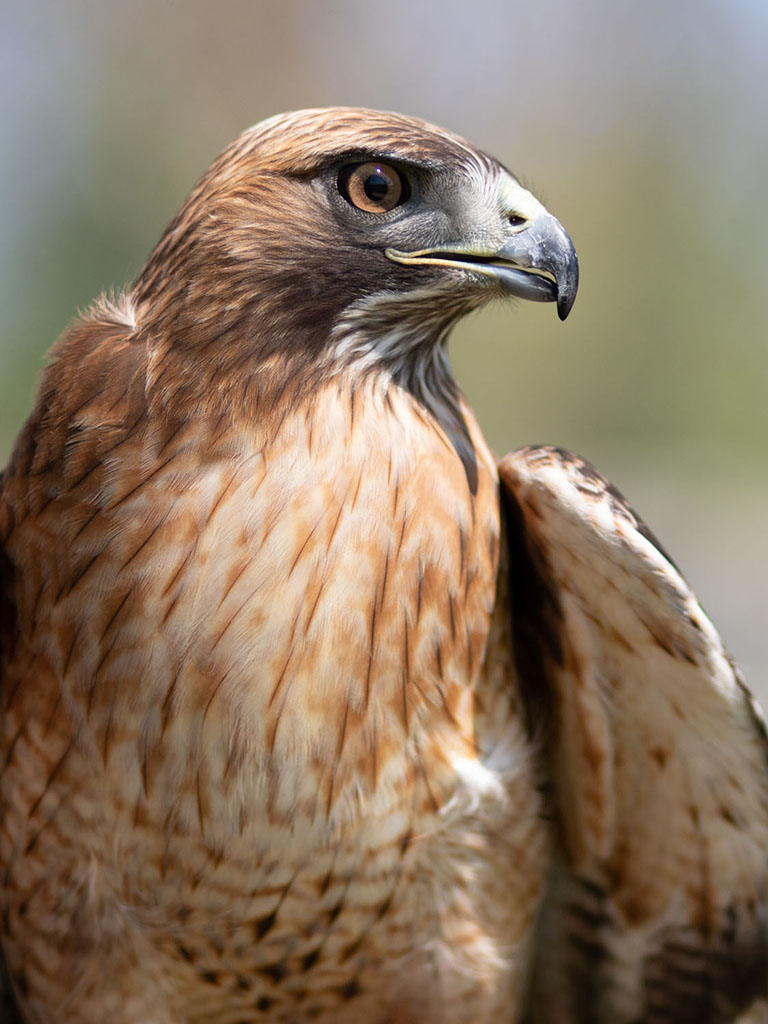 Red-Tailed Hawk (Male)
Red-Tailed Hawk (Male)
Our male red-tailed hawk came to us as a juvenile in August 2016 from a wildlife center in Southern California. His history is unknown but he is believed to be an imprint since his behavior was observed to be different from other wild red-tails. He quickly learned to fly to our glove for his food, and we have been working towards flight programs with him. Red-tails can be seen locally often perched on light poles and signs as you are driving down the road. It is the most common raptor in North America with a range from the tundra line all the way to Jamaica.

Red-Tailed Hawk (Female)
Our female red-tailed hawk was one-year old when she came to us in April 2016 with head trauma due to a window hit. While the rehab facility was able to treat the trauma, she was left blind in her left eye. As a result of these injuries, she is unable to hunt on her own in the wild. We’re happy to take her out on education programs though as she is one of our most calm birds. If you’ve ever heard a Bald Eagle scream in a movie, that is actually a Red-tail call. It is one of the most recognized calls of all raptors.
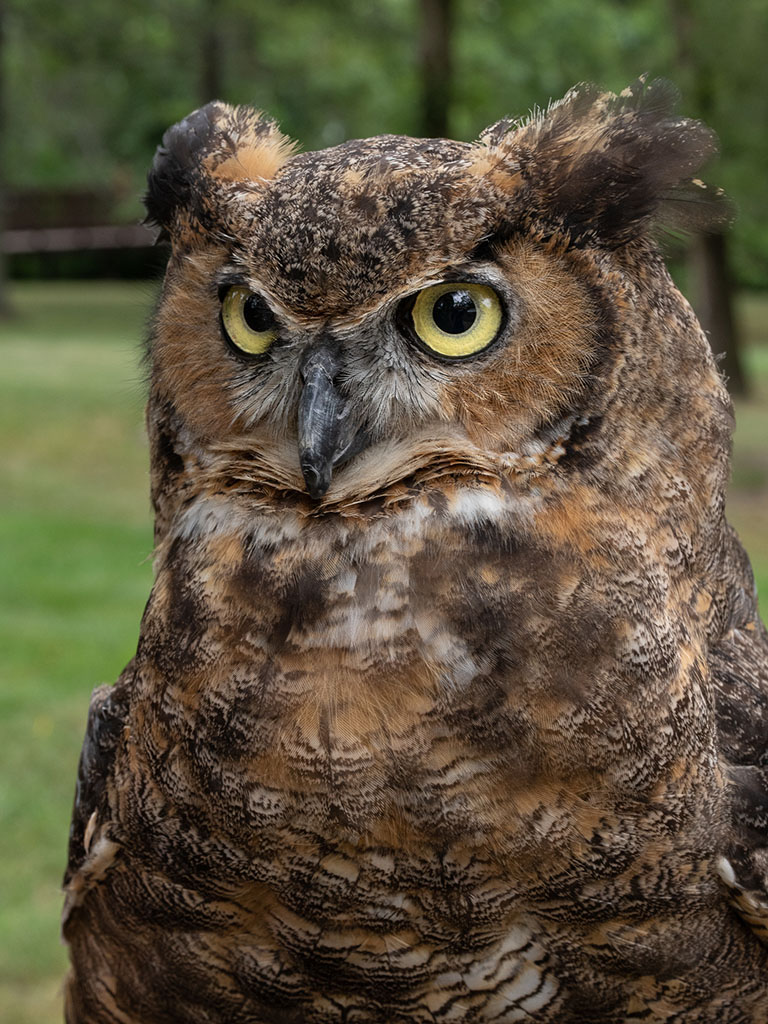 Great Horned Owl (Female)
Great Horned Owl (Female)
Our queen of the skies, the great horned owl is the top of her food chain in this area. Once full grown, there are very few predators that are able to take them down. Fun fact: great horned owls are one of the few predators able to take down a skunk because they cannot smell it. She came to us in 2009 after someone had taken her out of the nest as a baby. Unfortunately, she never learned the life skills to take care of herself. If she had been left alone, she would still be living her life out on the wild. It’s important to always remember to try to let the wildlife be.
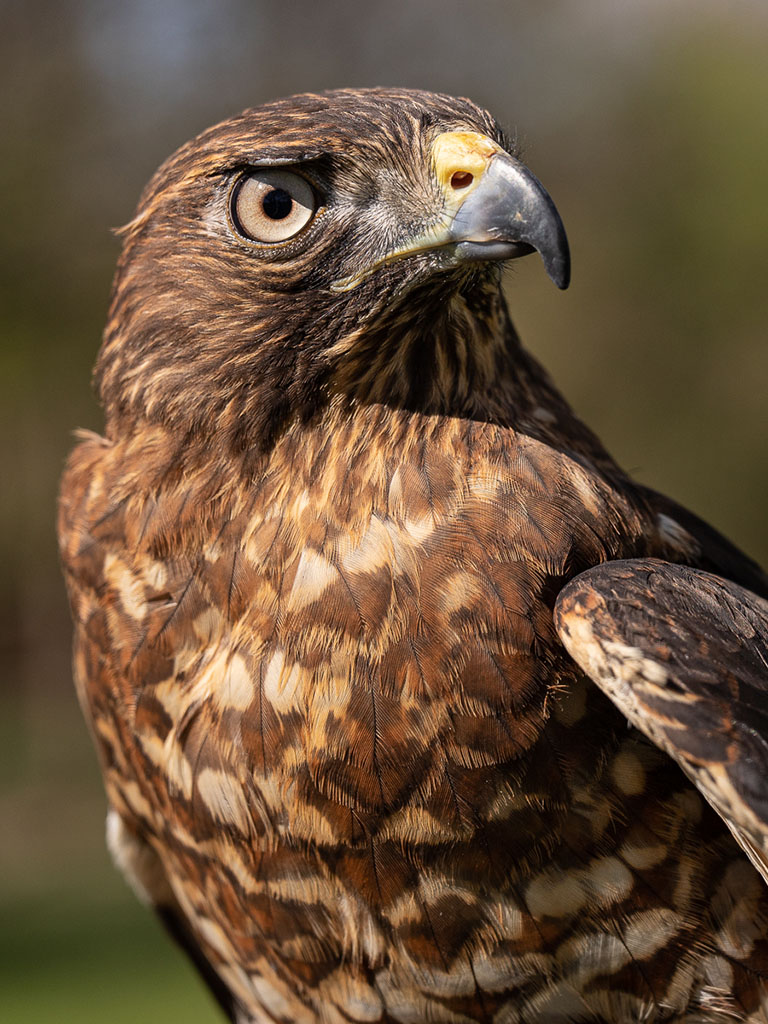 Broad-winged Hawk (Female)
Broad-winged Hawk (Female)
Each year, thousands of broad-wings gather together in what is known as a “kettle” and fly thousands of miles to South America. They generally reside in the interior of the forest. These birds frequently prey upon frogs, toads and small rodents, but may eat birds, invertebrates, and other reptiles should the opportunity arise. Our current resident female came to us in 2017 as an adult two-year old from the Carolina Raptor Center due to a wing injury. They determined that her wing would never heal fully thus preventing her from successfully providing for herself in the wild, and she would be unable to complete the long distance migration that these hawks undertake every year.
 Turkey Vulture (Female)
Turkey Vulture (Female)
Turkey vultures are the only resident vulture native to northern Illinois. Typically seen in more rural areas in the warmer months, they migrate south for the winter. Contrary to popular belief, vultures cannot smell when an animal is about to die. They can only smell deceased organisms. They have the best sense of smell of any bird species and are able to detect carrion from a mile away. Outside of eagles, the turkey vulture has the largest wingspan of Illinois’ native birds. This individual came to us in 2017 with an eye injury preventing her from being released to the wild. Vultures play a crucial role in the local environment. Their stomach acids are able to kill diseases like rabies and anthrax.
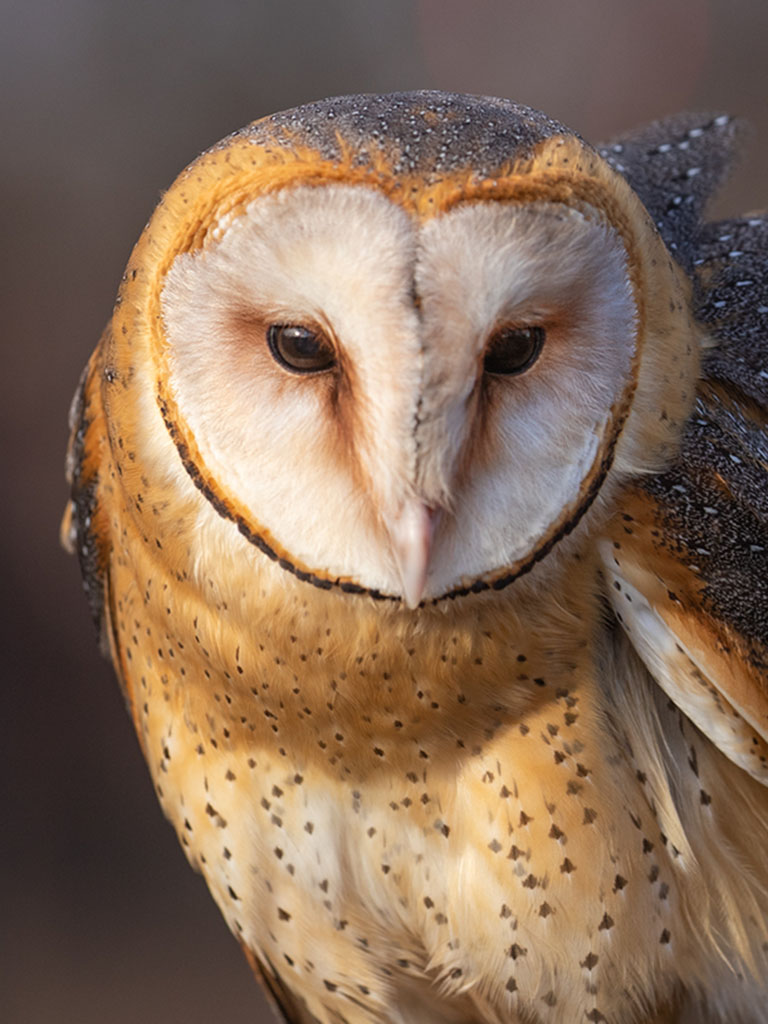 Barn Owl (Female)
Barn Owl (Female)
This Barn Owl joined us in July 2018. She was hatched with the goal of educating the public about Barn Owls in the wild. Even though Barn Owls can be found on every continent except Antarctica, they are threatened in Illinois and endangered in several mid-western states. Her role as ambassador will help to us to advocate for her species through public education about protecting their natural habitat and restoring Barn Owls to their native Mid-Western range.
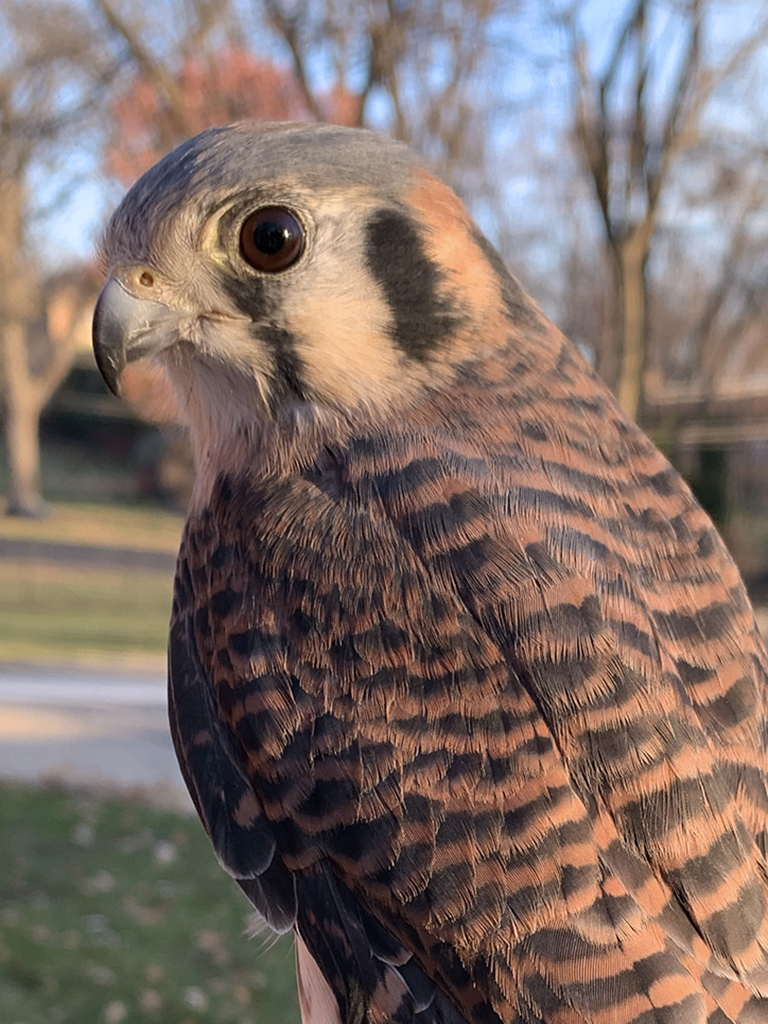 American Kestrel (Female)
American Kestrel (Female)
The American Kestrel is the smallest and most common American falcon. It can be found in North and South America, and in between. It is also one of the few sexually dimorphic birds in the raptor world. The males have slightly blue gray wing and head feathers while the females just have reddish brown coloring. Our female came to us from a Raptor Center in Michigan and is blind in her right eye. That injury, along with being captive-bred, prevents her from being released into the wild. She was 4 years old when she joined us in April 2021. You can help kestrels out in the wild by placing nest boxes on your property.
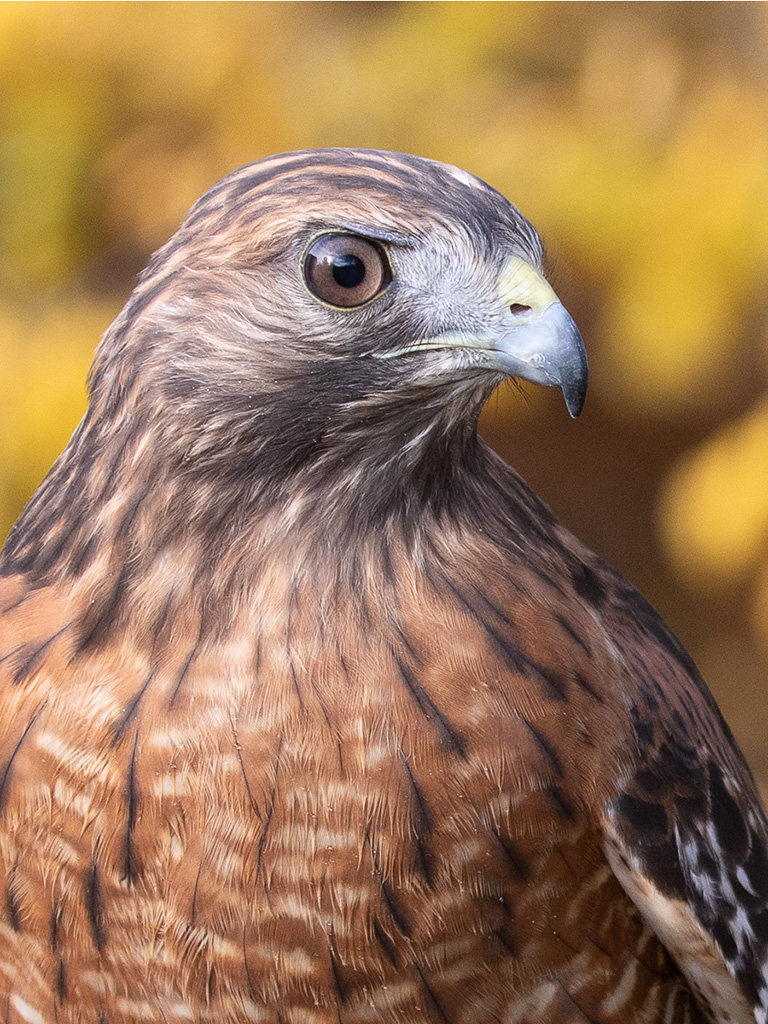 Red-Shouldered Hawk (Female)
Red-Shouldered Hawk (Female)
During the rehabilitation process, this female Red-Shouldered Hawk was found to be habituated to people and therefore was unable to be released back to the wild. She then spent her first 2 years learning to become an educational bird before she joined our group of ambassadors where she will help us to educate the public about her species.
 Eastern Screech Owl (Female)
Eastern Screech Owl (Female)
This Grey-Phase Eastern Screech Owl came to us from Michigan. She’s a captive bred owl and was raised in captivity with humans and other owls of her species. Due to her being imprinted and habituated with humans, she is not able to be released to the wild. She was 6 years old when she joined us in 2021.
 Turkey Vulture (Male)
Turkey Vulture (Male)
As a young bird, his nest was found in an abandoned building during demolition after which he was turned into a wildlife rehabilitation center. Unfortunately, he became imprinted upon people during his stay. Despite several attempts to release him back into the wild, he continued to stick around the property, and would seek out his human caregivers. Due to this dependence upon people, he was unable to be released back into the wild and spent the last 5 years as an education ambassador with an educational facility.
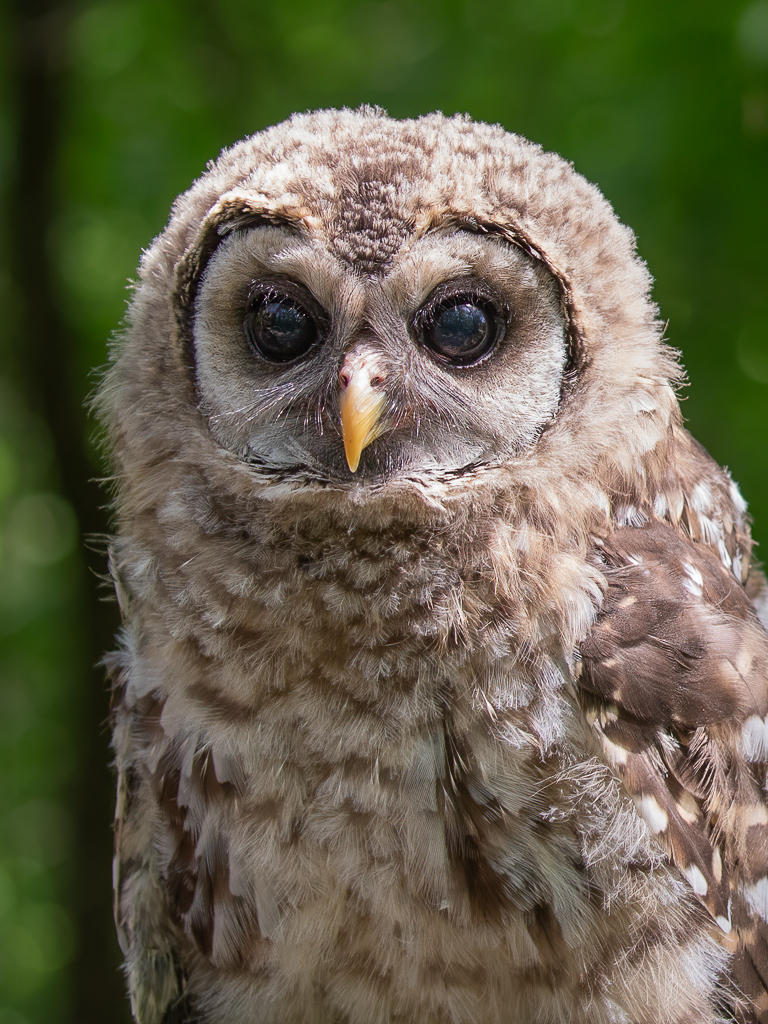 Barred Owl (Male)
Barred Owl (Male)
This young barred owl was brought to a wildlife rehabilitation center in St. Louis as a nestling due to injuries thought to be from an animal attack. Once it was determined that he would not regain full range of motion in his right wing, they deemed him non-releasable to the wild. He has since recovered from the wounds with the exception of a permanent wing injury.

